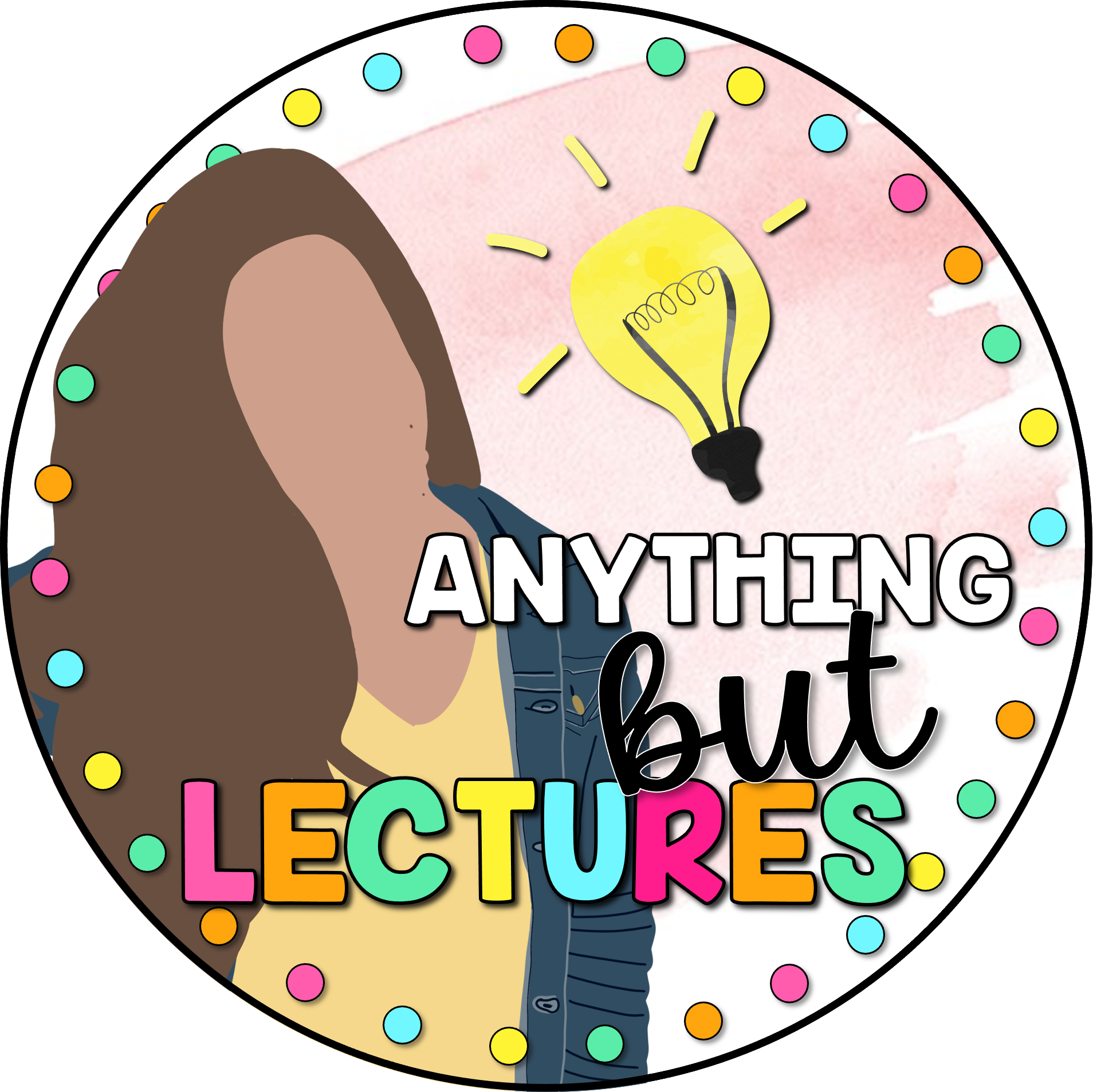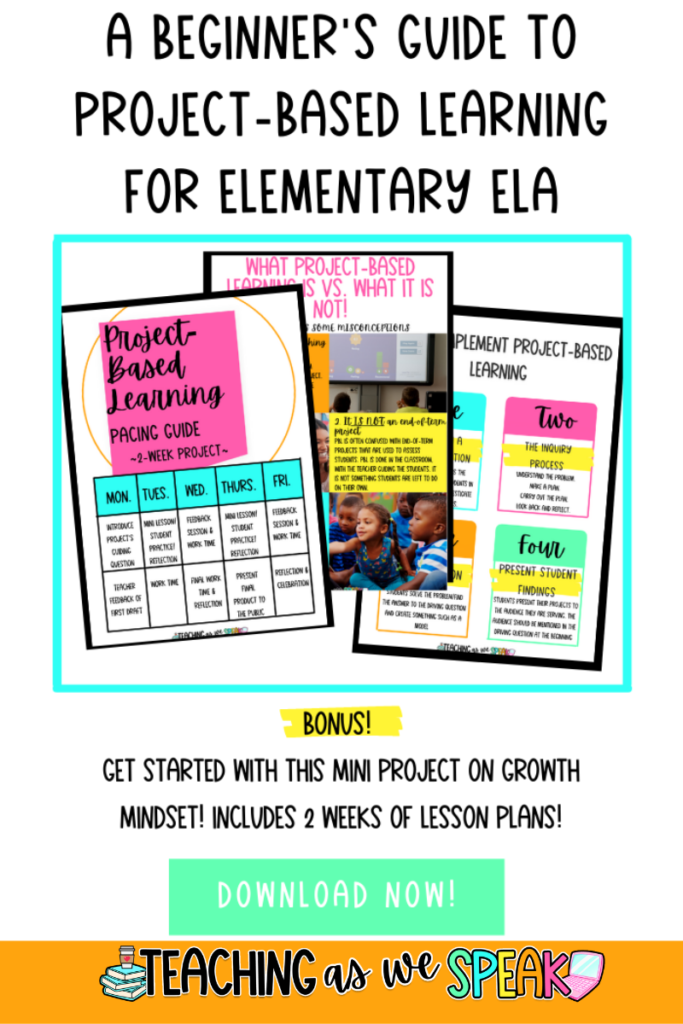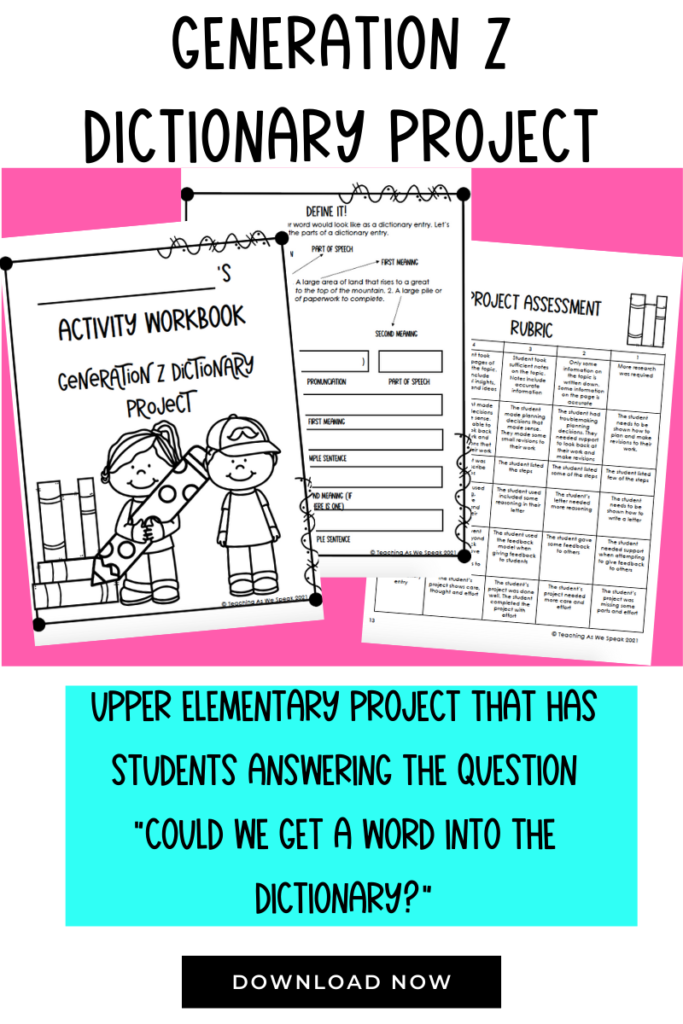One of the hardest, and most important parts of project-based learning is coming up with effective driving questions. Driving questions for PBL are like trailers for a movie; It piques interest and makes you want to see where it’s going to go.
Keep reading if you want to know what driving questions for PBL are, where to come up with them and how to implement them in your teaching!
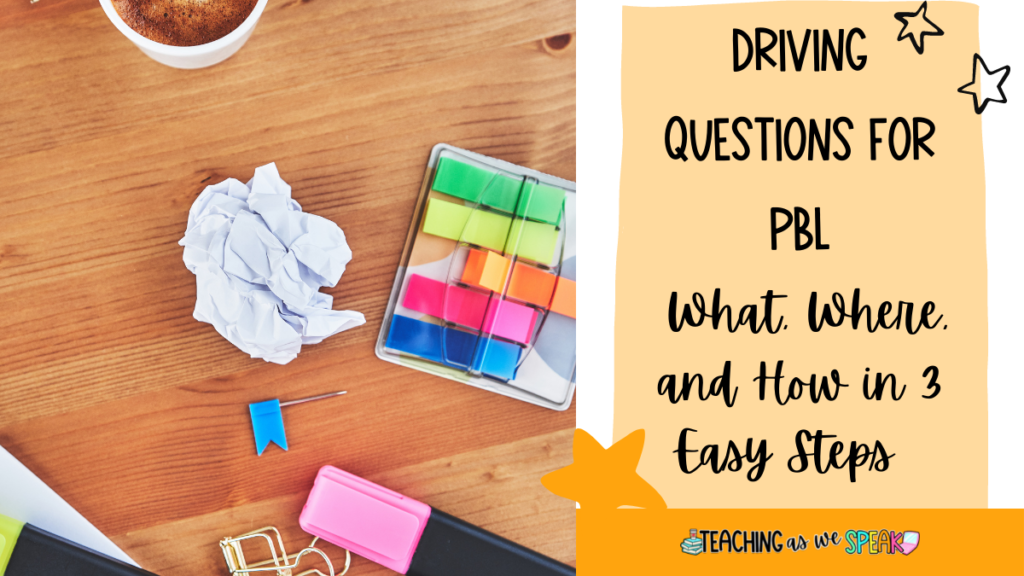
Want a free 2-week project that follows the project-based learning method? Click here to download the Beginner’s Guide to Project-Based Learning for Elementary ELA.
What are Driving Questions for PBL?
When planning your project, you as the teacher need to develop a driving question. This question will “drive” the students’ learning throughout the project. It should be introduced during the first lesson after the students have participated in a hook lesson or provoking activity.
There are 3 main components to a well-written driving question. It must be:
- Engaging for the students. That means it is interesting, it is thought-provoking and gets the students interested in the topic. Students should hear the driving question and beam with excitement.
- Open-ended. Did you ever notice that if students are presented with a yes or no question, they will have an immediate answer, whether they know the answer is true or not.If you present a driving question that can be answered with a ‘yes or a ‘no’, the project will not get very far!
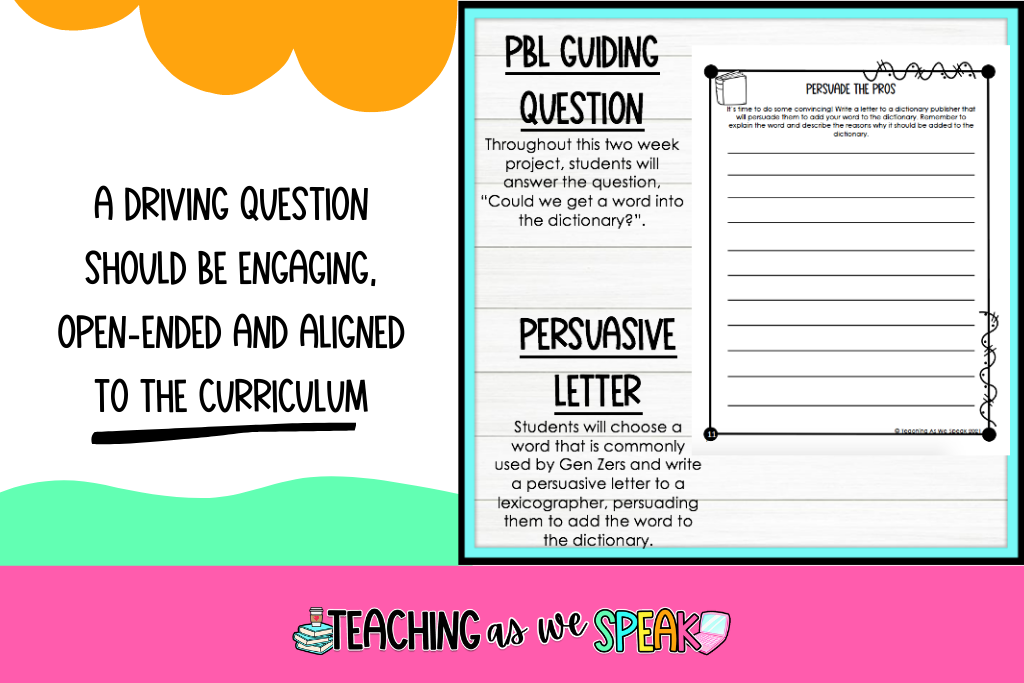
- Created with the end in mind. You need to know what you want students will learn and understand by the end of the project. The project should be aligned with the skills you have planned for when you created a curriculum map. Click here to read my blog post on curriculum mapping.
Where do you come up with an idea?
There are a few ways to develop ideas for guiding questions. Remember, you want it to be highly engaging and relevant to your students. You also want it to provoke challenging rigorous learning, while still being understandable to your students.
Here are a few ways I think of my ideas:
- Listen to my students. I love taking what my students are talking about/interested in and findings ways to use it to teach them!
- Seasonal/cultural events. Another way to make learning relevant is to consider the time of year. If I’m creating a project in December, I may create a driving question that is related to different holidays. If it’s the Fall time, I could think of an autumnal-related driving question.
- Using books. I am an ELA teacher, so you had to have seen this one coming! I love taking a theme of a book I know I want to include in my teaching and writing a driving question that relates to it. For example, if reading Front Desk by Kelly Yang, one possible driving question could be “what do we need as humans to survive?” Click here to read my blog post about using books to develop topic ideas.
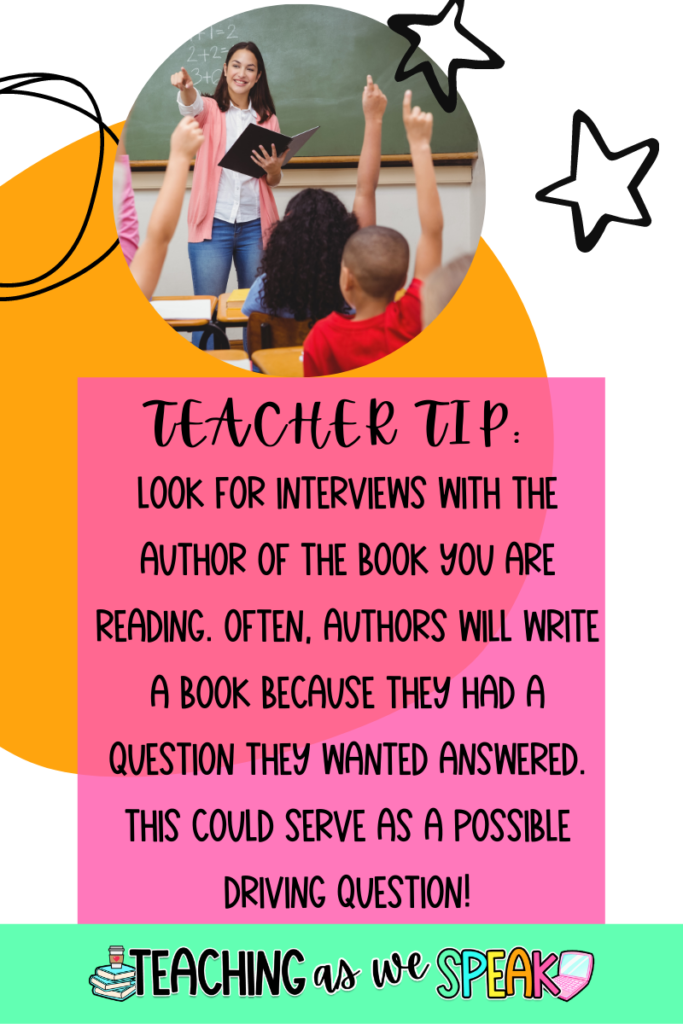
Click here to download my free Beginner’s Guide to Project-Based Learning.
How to introduce a driving question to your students.
First, I start with a hook/provocation. It’s not fun to just tell the students what the question is. You want them to get to it on their own (or with little guidance).
Start by planning a thought-provoking hook. You want the hook to get students curious and exciting. This could be a game, a scene that has been set up or something out of the ordinary happening.
Secondly, discuss with students what they experienced/saw/ felt during this hook. Meanwhile, you should be guiding students to eventually land on the driving question on their own.
Here are a few examples…
Growth mindset project
In the growth mindset project I created, students compete in a card tower competition. For this activity, you split the class into two groups; one class builds their towers out of playing cards, while the other students scribe what they hear students saying as they build. Then, you switch roles.
This activity leads students to reflect on how they talk to themselves and others when faced with challenges. The topic of growth and fixed mindset comes up. Eventually, through this teacher-led discussion, students land on the questions, “how do you know if you have a growth mindset?”
Click here to download this free project that’s a part of the Beginner’s Guide to Project-Based Learning. (Teacher questions are included in this free resource!)
Generation Z Dictionary Project
In this resource, students are first faced with a short text that includes challenging words. Chances are, students have never seen/hear of these words before. This leads to a discussion about how we use/ don’t use words. Students discuss words that are relevant to them vs words that they deem outdated. Students will discuss whether these more new-age words should be included in the dictionary. Finally, this leads to the driving question “could we get a word into the dictionary?”.
Click here to check out this Generation Z Dictionary project.
Final Thoughts on Driving Questions for PBL
Was this helpful? Still, have questions? Comment below and I’ll get back to you asap!
